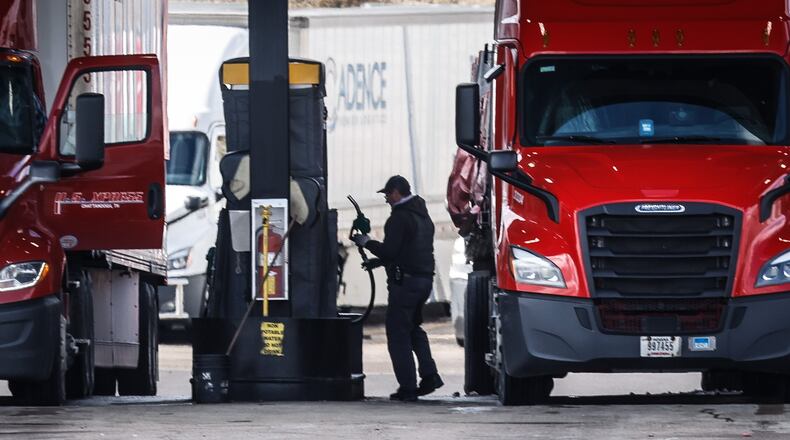And this winter, when diesel can be in high demand as heating oil, stocks of U.S. diesel are 28 million barrels below the pre-pandemic seasonal average for 2015-2019, at the lowest level for this time of year since 2014, Reuters news service recently reported.
Nick Bartlett, co-owner of Spears Transfer & Expediting in Vandalia, said his company pays for the diesel used by his company drivers, while owner-operator drivers who own their own equipment and work for him cover those costs on their own.
“It’s a huge factor for us because it shot up so fast,” Bartlett said. “It is a cost adjustment.”
And who pays for those higher fuel prices? We all do in the end, Bartlett said.
“Like every business model, we pass that along to our customer, through a fuel surcharge reimbursement,” he said. “So then the customer passes that on to their customer, (then) to their customer and ultimately, who ends up paying for it is you and I, every time we go to the grocery store, every time we go wherever.”
A fuel fill-up for a big-rig trucker can reach 200 to 300 gallons (total in two tanks). And decent fuel mileage for a big truck can mean only 7.5 to 8 miles per gallon.
“Eight miles per gallon is doing well,” Bartlett said.
However, not all the news is bad, he added. Last year, his company saw record sales and usage and demand for freight services remains high, even as costs rose.
Patrick De Haan, head of petroleum analysis with GasBuddy, said rising oil prices are pushing diesel and gasoline prices up. Jet fuel, propane, heating oil, liquified natural gas and more are all going up, he noted.
According to AAA, the average price for a gallon of gas in Ohio was $3.23 recently.
It’s all rising, and the phenomenon can be attributed at least in part to long-term decisions by oil companies to cut back production during the height of the pandemic.
Recall that at one point in the spring of 2020, when stay-at-home orders were the norm, the price of oil fell to $0 a barrel for the first time — in fact, it was negative. Traders had to pay someone to take oil for a couple of hours on one trading day, De Haan noted.
“They (oil companies) had to protect their balance sheet. And the only way they knew how to do that was to stop making a product that Americans stopped using for a while,” he said.
Corn, meat and an array of other prices are also up, as inflation in general is increasingly acknowledged as an everyday reality.
Still, semi-trucks can haul a lot of goods, which helps to “water down” the impact of fuel costs on consumer costs, he said. He estimated that about 15% of consumer goods inflation could be linked to higher fuel prices.
Meanwhile, don’t look for relief any time soon. Last month, the International Energy Agency predicted that demand for global oil will exceed pre-pandemic levels this year, further pressuring supply against soaring demand.
About the Author

